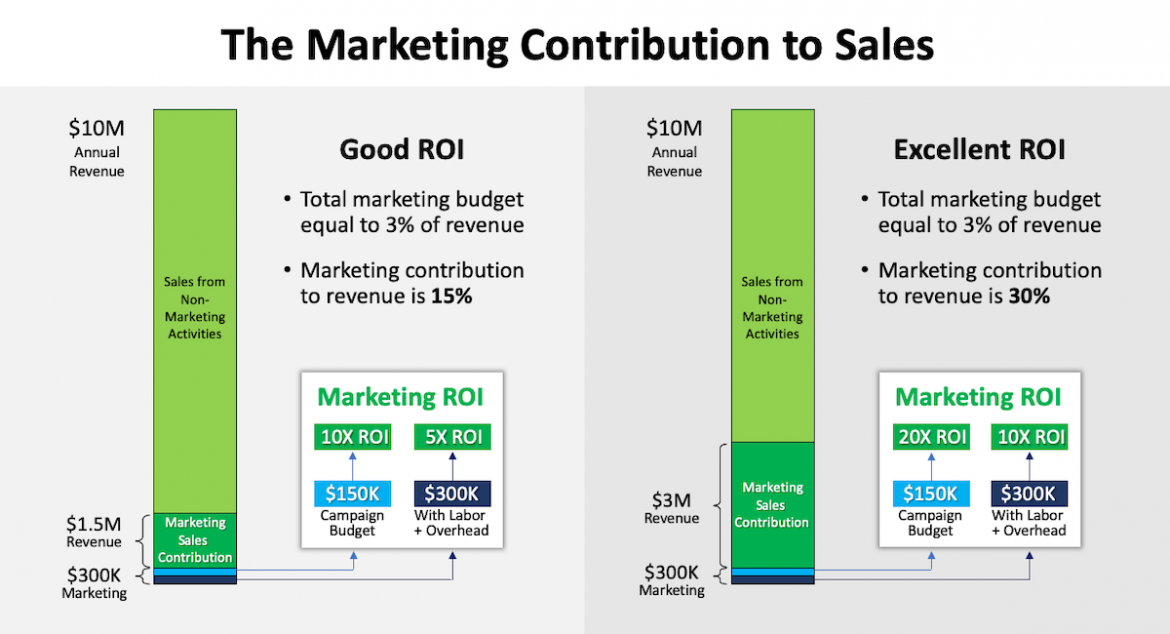What’s Your Marketing Contribution to Sales?
How much should you budget for marketing during the coming year? Unless you have a measurable and predictable marketing ROI, it’s a hard question to answer. Most senior executives take a conservative approach by allocating the bare minimum. While this approach saves money, it limits growth.
If you don’t have historical data, here’s a way to look at your marketing investment. Start with assumptions based on industry benchmarks. Set goals that make marketing accountable for a revenue contribution percentage. The marketing contribution to sales should be based on a reasonable rate of return for the investment you’re making.
Here’s an example. An imaginary $10 million company funds marketing at a conservative 3% of revenues. Let’s assume the marketing budget is composed of a 50-50 ratio of campaign funds to employee wages and facilities overhead. That leaves $150K for campaigns during the year.
The Impact of Marketing ROI
A good ROI would be revenue generated at a 10X multiple versus the cost of campaigns. However, when you factor in the rest of the marketing budget, that multiplier drops to 5X (see the left-hand side of the infographic). The contribution to sales is $1.5 million or 15% of annual revenue. For a greater revenue contribution from marketing, you’ll need to invest more than a 3% ratio.
By continuously improving your campaigns, you’ll increase your marketing ROI. And you’ll realize a greater marketing contribution for the same 3% investment. A 10X ROI in the first scenario is really good, but a 20X ROI is even better. Actually, it would be excellent.
Double the Marketing Contribution to Sales
An excellent ROI is illustrated in the right-hand side of the infographic. By doubling the marketing ROI of your campaigns, you can double the marketing contribution to sales. Even when fully burdened by labor and overhead, you’re still getting a 10X return on the marketing investment.
In this case, $3 million of the $10 million annual revenue target is contributed by marketing. For a precise ROI measurement, subtract the marketing investment from the revenue contribution. Note: the same concept applies in both scenarios. The higher the marketing ROI, the greater the revenue contribution for a given level of investment.
Once you demonstrate this level of marketing efficiency, you can raise the level of investment in marketing from 3% to 5% (or more). And, you can do so with the knowledge that its revenue contribution will rise proportionately.
The Value of Revenue Marketing
This simple exercise illustrates the value of “revenue marketing’. Use it as a guide to drive cost efficiency into your sales and marketing operation. Of course, the approach does require more than just setting targets and hoping for the best. It requires a well-defined messaging strategy, underpinning a highly focused, data-driven demand generation campaign. The effort is worth the result. Establishing a close alignment between your sales and marketing teams with shared ownership of goals that will translate into revenue growth.

